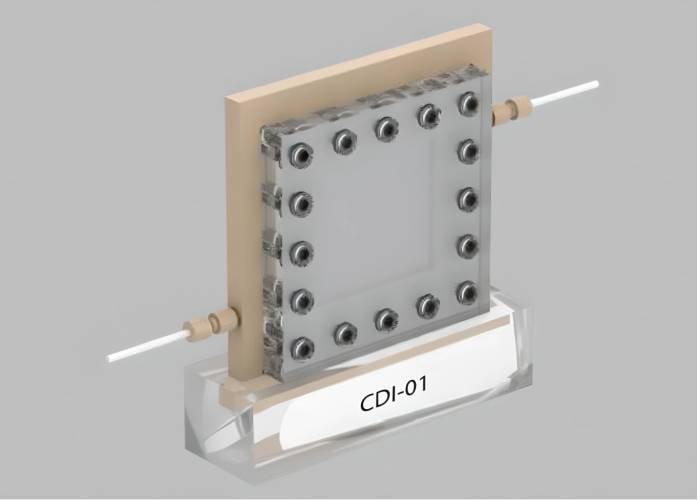Membrane Electrode Assembly (MEA) Test Cells
Laboratory MEA test cells engineered for accurate, repeatable electrochemical studies across PEM fuel cells, AEM water electrolysis, and CO2 reduction. Modular designs support varied flow fields, materials, and in-situ visualisation.
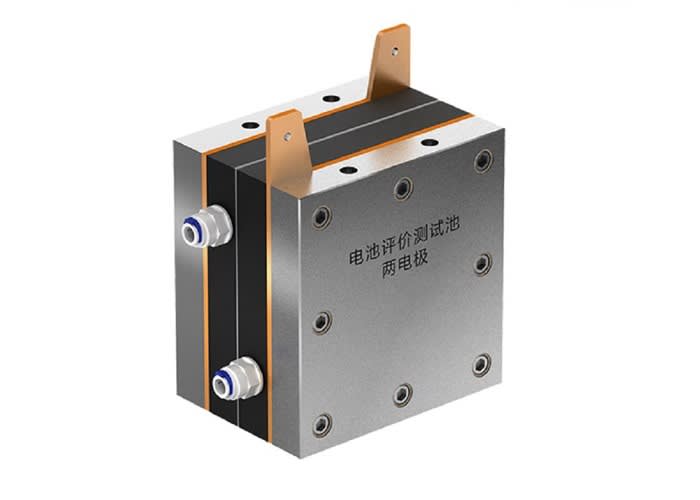
Graphite Bipolar Plate MEA Electrolysis Test Cell
- Single-cell MEA hardware: Flow fields: 10×10 to 1000×1000 mm or customisation available
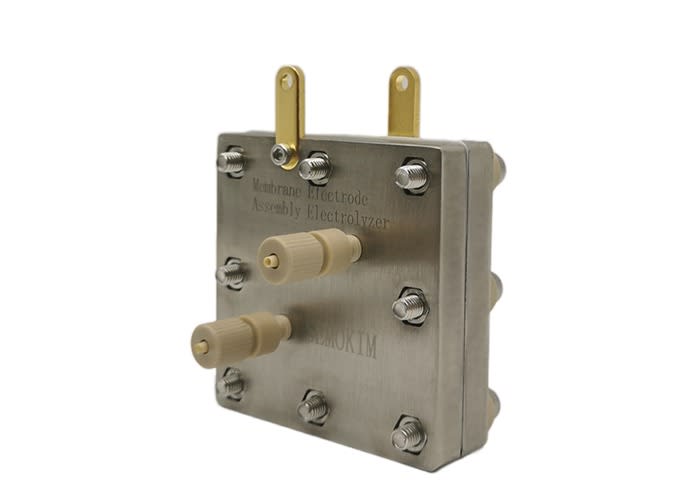
Metal Bipolar Plate MEA Electrolysis Test Cell (Ti/Ni/SS)
- Flow channel: 10*10mm; 20*20mm; 30*30mm; 50*50mm, or other customized flow field size.
- Cell material: High-purity titanium or nickel or stainless steel
- Terminal material: Gold-plated Copper
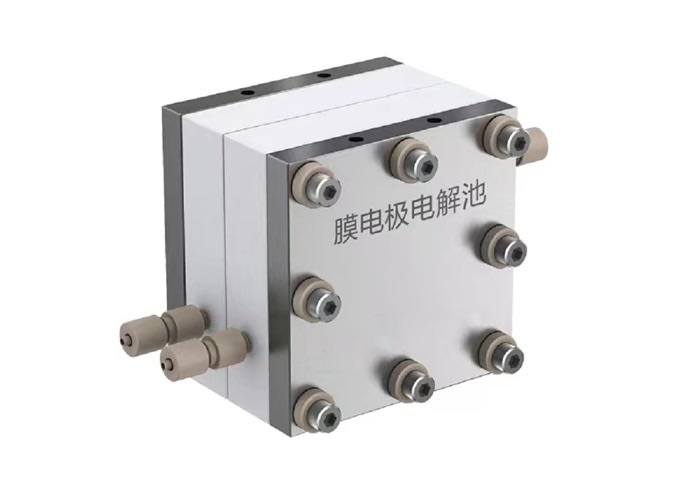
Interchangeable Flow Field MEA Electrolysis Test Cell
- Flow channel Specification: 10*10mm; 20*20mm; 30*30mm; 50*50mm or other customized flow field size.
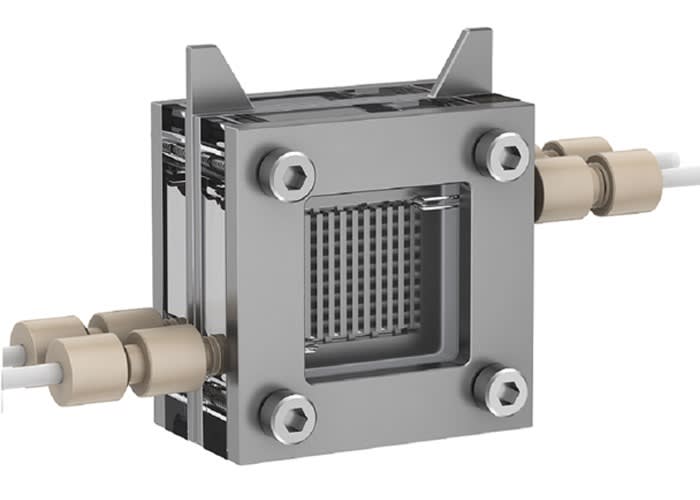
Visual MEA Electrolysis Test Cell
- Flow channel Specification: 10*10mm; 20*20mm; 30*30mm; 50*50mm or other customized flow field size.
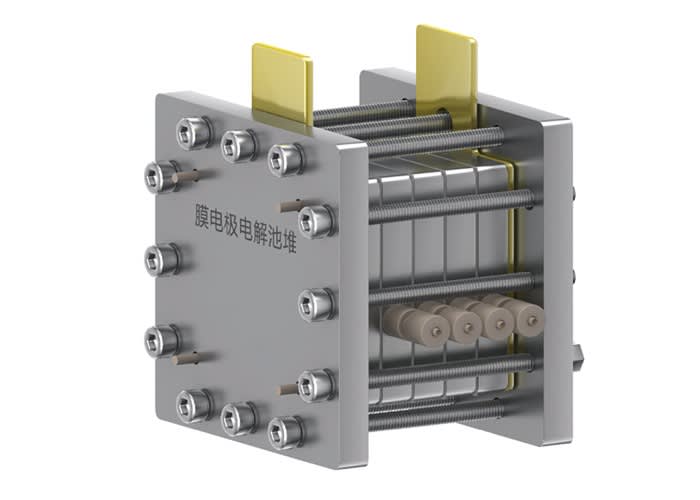
MEA Electrolysis Cell Stack
- Flow channel: 10*10mm; 20*20mm; 30*30mm; 50*50mm, or other customized flow field size.
- Cell material: High-purity titanium or nickel or stainless steel plate.
- Terminal material: Gold-plated Copper
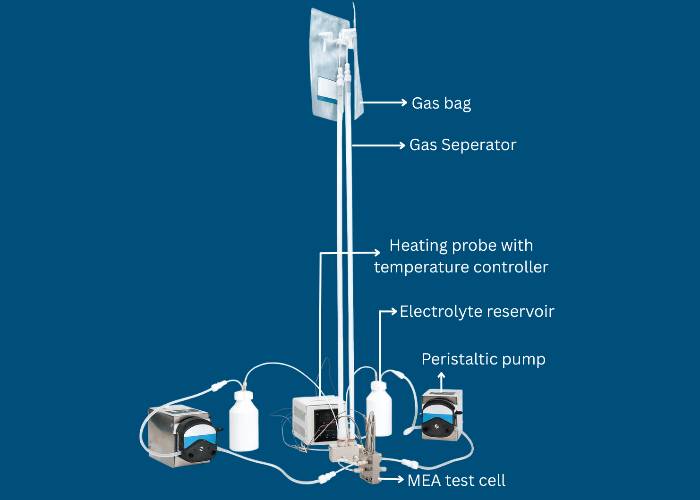
Turnkey MEA Electrolysis Test Cell Package
- All components included : - cell + fittings + tubing + auxiliaries
Membrane Electrode Assembly (MEA) Test Cells & Complete Packages for Fuel Cell and Electrolyser Research – PEM, AEM & Alkaline Electrolysis
High-Performance Fixtures and Fully Integrated Systems for Precise and Reproducible Testing of Membrane Electrode Assemblies (MEAs)
Overview
The ScienceGears Membrane Electrode Assembly (MEA) Test Cells is engineered to support advanced electrochemical research on PEM fuel cells and water electrolysers. With precision machining and modular design, it enables accurate, repeatable testing of various membrane electrode assemblies (MEAs) under controlled conditions.
Whether you're working on hydrogen generation, fuel cell development, or membrane evaluation, this test fixture is ideal for laboratory-scale investigations and prototyping.
For researchers seeking a complete, ready-to-use solution, ScienceGears also offers the Membrane Electrode Assembly Complete Package. This package integrates the MEA Test Cell with essential peripherals, including a gas separator, alkaline electrolyte reservoir, separation chambers, gas collection bags, peristaltic pump, temperature control unit, and all necessary tubing and fittings, enabling immediate deployment for fuel cell and electrolyser experiments without the need to source additional components.
Key Features
- Robust & Reusable: CNC-machined body ensures mechanical durability and long service life
- High Chemical Resistance: Compatible with acidic and alkaline electrolytes
- Easy Assembly: Tool-free design enables fast MEA swapping
- Flexible Configuration: Supports various membrane sizes (customizable)
- Gas/Liquid Flow Control: Built-in ports for inlet/outlet with optional humidification
- Current Distribution Plate: Graphite or stainless steel options available
- Heating Support: Designed for integration with external heaters and temperature sensors
Additional Complete Package Advantages:
- Integrated gas separation and collection for real-time monitoring of hydrogen and oxygen output.
- Alkaline electrolyte reservoir with secure fittings to ensure safe and consistent electrolyte circulation.
- Dual separation chambers for anode and cathode gas/liquid management.
- Peristaltic pump system for controlled electrolyte flow, minimising contamination risk.
- Temperature control module for precise thermal management of MEA operation.
Applications
Electrocatalysis & Gas Conversion
- CO₂ Reduction Reaction (CO₂RR)
- Nitrate Reduction (NO₃RR → NH₃)
- Hydrogen/Oxygen Evolution in Water Splitting & Electrolyzers (PEM, Alkaline, Zero-Gap)
Fuel Cells & Energy Systems
- PEM Fuel Cells (automotive & stationary)
- Low-pressure electrochemical energy harvesting
- Durable & low-PGM catalyst MEAs for long-term use
Environmental & Resource Recovery
- Microbial Fuel Cells (MFCs) & Microbial Electrolysis Cells (MECs)
- Electrochemical Advanced Oxidation Processes (EAOPs) for water treatment
- Flow-Electrode Capacitive Deionization (FCDI) for desalination
Modeling, Diagnostics & Performance Optimization
- Membrane transport modeling (Nernst-Planck, ML-aided optimization)
- Preventing CO₂ crossover and improving reaction efficiency
The Complete Package is particularly suited to turnkey laboratory setups where immediate commissioning is required. By combining the MEA Test Cell with gas management, electrolyte circulation, temperature regulation, and fluid handling accessories, it supports extended-duration experiments, comparative performance testing, and automated operation with minimal downtime.
What’s Included
- MEA test fixture with top and bottom plates
- Gaskets and sealing rings
- Current collector plates
- Gas/liquid connection ports
- Assembly toolkit (optional)
- User manual and setup guide (PDF)
Membrane Electrode Assembly Complete Package
- All MEA Test Cell Kit components listed above
- Gas separator unit
- Alkaline and other electrolyte reservoir (sealed, chemical-resistant)
- Separation chambers for anode/cathode streams
- Gas collection bags with secure fittings
- Peristaltic pump with adjustable flow rate
- Temperature control module with sensor integration
- Pre-cut tubing and fittings for complete system integration
Request a full technical datasheet here.
Technical Specifications
| Parameter | Description |
|---|---|
| MEA Size Supported | 1–10 cm² (custom sizes on request) |
| Flow Field Plate Material | Graphite / SS316 (optional) |
| Operating Temperature Range | Up to 100 °C (with external heating) |
| Sealing Type | O-ring & PTFE gasket |
| Pressure Range | Up to 3 bars |
| Connection Ports | 1/8” or 1/4” NPT threads |
| Compatible Electrolytes | Acidic, alkaline, neutral |
Product Variants Available
- Metal Bipolar Plate Cells – Ideal for high-current alkaline studies
- Visual Membrane Cells – Best for in-situ analysis of gas bubble formation
- Interchangeable Flow Channel Cells – Customizable geometry for fluid dynamics research
- Stackable Electrolytic Cell Blocks – Perfect for multi-cell electrolysis and prototyping
Complete Package Variant
Available with either single-cell or stackable multi-cell configurations, with all peripherals sized appropriately for your intended experimental scale.
Material Options
- Graphite: excellent chemical stability and machinability for precise flow fields.
- Titanium/Metal: high electrical/thermal conductivity and mechanical strength for demanding current densities.
- PTFE: exceptional corrosion resistance for harsh electrolytes; commonly paired with titanium hardware.
- Visual windows: enable optical diagnostics of gas evolution, flooding, and channel behavior.
Advantages of Buying from ScienceGears
Application-driven configurations (flow field, materials, visualization), compatibility with standard lab instruments, and responsive technical support for tailoring cells to your protocol - backed by a catalogue spanning MEA, H-cells, and photoelectrochemical cells.
By choosing the Complete Package, you benefit from seamless integration of the MEA Test Cell with all operational peripherals, delivered as a ready-to-run system, fully tested before shipment. This ensures optimal compatibility, safety, and efficiency for demanding research programs.
Frequently Asked Questions
- What is a membrane electrode assembly (MEA)?
An MEA consists of an ion-conductive membrane sandwiched between a catalyst-coated anode and cathode. It is the core functional unit in fuel cells and PEM electrolysers. Our test cells enable the rapid prototyping of MEAs for laboratory experiments. - Which cell is best for PEM water electrolysis?
We recommend the Visual Membrane Electrode Cell or the Bipolar Plate Cell for PEM water splitting, as they offer high chemical resistance and enable gas evolution monitoring. - Can I test both acidic and alkaline MEAs?
Yes. The materials used in our MEA test cells are resistant to both acidic and alkaline environments. - Can I test different electrode materials?
Yes! All our electrolytic cells support interchangeable electrode plates, including Pt, Ni, Ti, SS, graphite, and carbon felt. - Do you offer complete electrolyser setups?
Coming soon: ScienceGears will launch complete kits including the cell, pump, power supply, tubing, and accessories. Contact us to express early interest. - Are the cells compatible with commercial membranes?
Yes - our designs support standard-sized Nafion, Fumasep, and Zirfon membranes, as well as others. - Do you offer customisation?
Yes, we offer custom membrane sizes, flow field patterns, and materials based on your research needs. - Which plate material should I choose?
A: Graphite suits chemically aggressive conditions; titanium/metal supports higher currents and durability; PTFE plates excel where corrosion risk is highest. - What flow field is best for my study?
A: Serpentine promotes uniform reactant distribution; parallel/multi-channel can reduce pressure drop; custom fields help study mass-transport effects. - Can I observe gas evolution in real time?
A: Yes, visual MEA cells integrate optical windows for in-situ imaging and diagnostics. - Do you offer stackable configurations?
Yes, stackable MEA blocks increase voltage/power and are available with heating and measurement ports. - Do you offer complete electrolyser setups?
Yes. ScienceGears offers the Membrane Electrode Assembly Complete Package, which includes the MEA Test Cell plus gas management, electrolyte handling, temperature control, and all necessary accessories for immediate operation. - Can I purchase the complete package with custom specifications?
Absolutely. We can size the electrolyte reservoir, gas separator, and temperature control to your research needs, and provide compatibility with your existing laboratory potentiostat or gas analysis equipment.
For further information or to discuss your specific research requirements, please contact us.
Summary
ScienceGears’ MEA test cells are trusted by researchers across Australia and New Zealand for their precision, versatility, and seamless integration with PEM, AEM, and alkaline electrochemical systems. Whether you're characterising a new catalyst, evaluating membrane performance, or developing fuel cell and electrolyser prototypes, our modular fixtures offer robust construction and flexible configuration. With options for custom electrode plates, integrated flow control, and compatibility with a wide range of potentiostats, we’re here to support your innovation from concept to breakthrough.
For those seeking an all-in-one MEA testing solution, the Complete Package delivers every critical component — from cell fixture to gas handling, electrolyte circulation, and temperature control — in one optimised, laboratory-ready system. With options for custom electrode plates, integrated flow control, and compatibility with a wide range of potentiostats, ScienceGears supports your innovation from concept to breakthrough.

